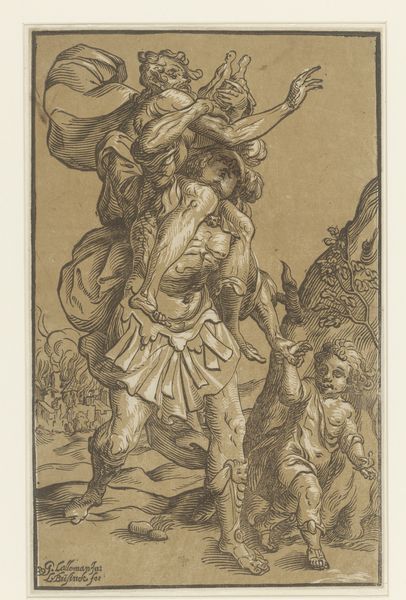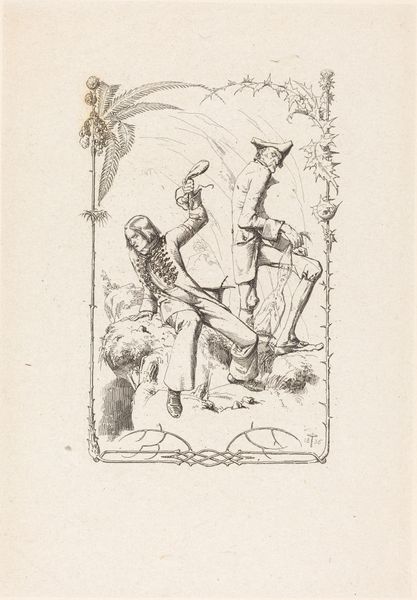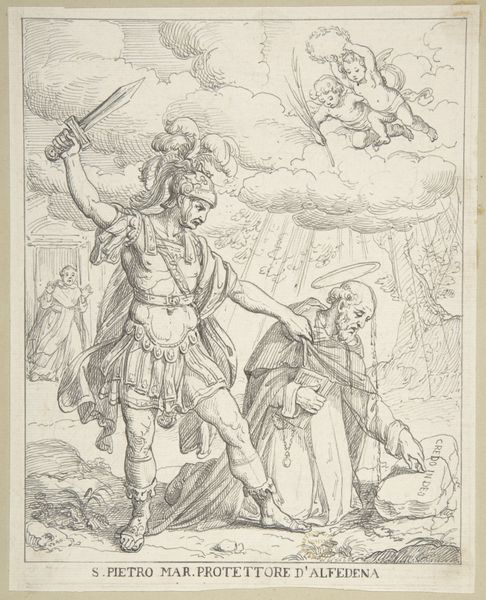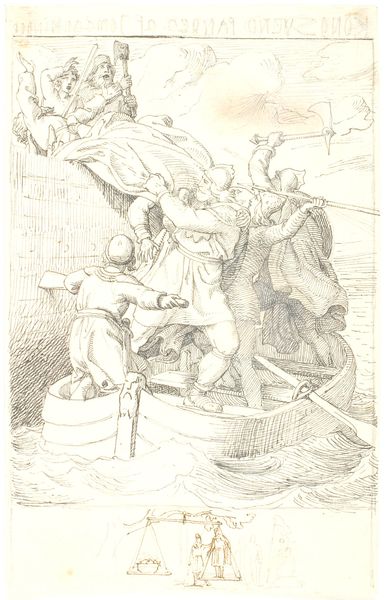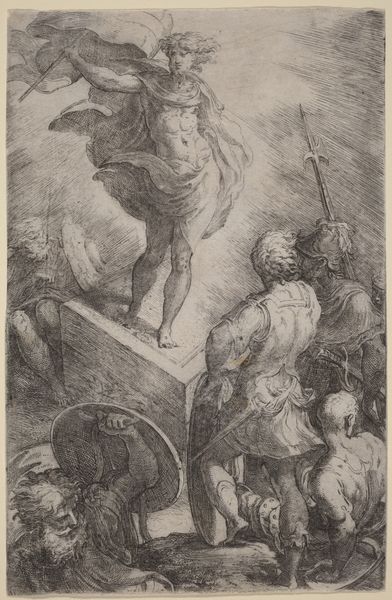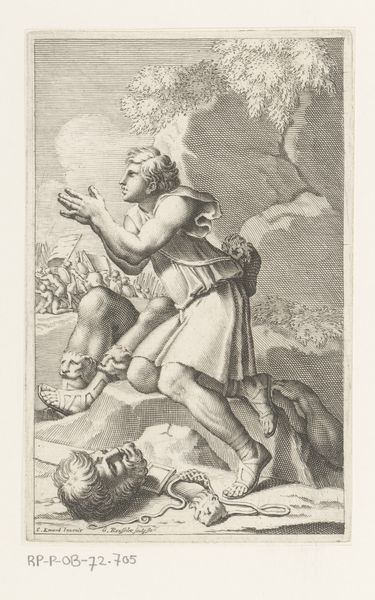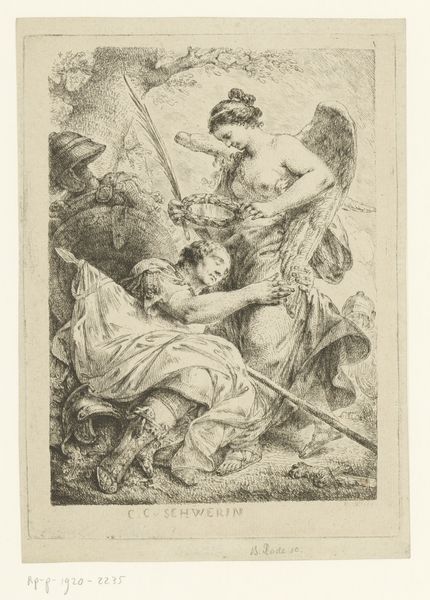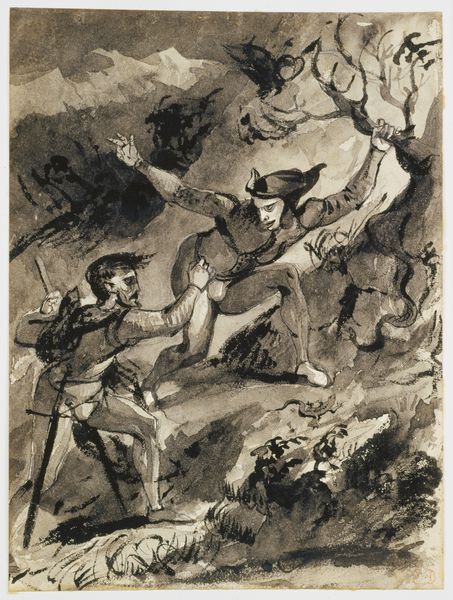
Frontispiece voor 'All the Talents' van 'Polypus' (E. S. Barrett), 1807 Possibly 1807
0:00
0:00
print, engraving
#
portrait
# print
#
caricature
#
romanticism
#
history-painting
#
engraving
Dimensions: height 196 mm, width 120 mm
Copyright: Rijks Museum: Open Domain
Curator: Here we have a print, "Frontispiece for 'All the Talents' of 'Polypus' (E. S. Barrett), 1807," possibly from 1807, created by Thomas Rowlandson. It's held in the collection of the Rijksmuseum. The piece primarily utilizes engraving, characteristic of its time. Editor: The immediate impression is biting satire! The anthropomorphic monkey dressed in formal attire, complete with spectacles and wig, strikes a discordant image against the backdrop of chaos. Curator: The artist’s method underscores the subject. Rowlandson's technique uses precise engraving to depict the absurdity of the political scene at the time. Notice the medium's capability to translate very detailed drawings into repeatable images, therefore distributing critical viewpoints. The piece serves as a vehicle for popular dissent. Editor: Absolutely! The monkey, a traditional symbol of mimicry and foolishness, skewers the British government of the era. Note the "Finance" book and other semiotic items that contribute to the critical symbolism, and reveal social anxiety about monetary management, specifically linked to this government’s activity. It encapsulates both history-painting and caricature traditions to convey sharp political commentary. Curator: Indeed, beyond the immediate subject, consider the materials. Engraving relies on specialized tools and craftsmanship. The copperplate and the printing press became agents of political commentary through accessible images like these, fundamentally democratizing dissent by leveraging materials of the day. Editor: I am especially drawn to the standard that displays "MAG: CHA: COPERN:"—a fascinating emblem blending references to Magna Carta and Copernicus. Rowlandson seems to be indicating fundamental shifts and upheavals of power and knowledge. Curator: Precisely, the very production and availability of this piece challenge the elite. Its materiality—print on paper—allowed Rowlandson to make it readily accessible to a broad segment of society, acting as an instrument for challenging authority. Editor: Studying this print gives rich insights into the use of cultural imagery as an essential device for conveying critique during periods of political turmoil. Curator: Indeed, it exemplifies how art materials and processes can become intrinsic elements in spreading resistance and sparking societal discourse.
Comments
No comments
Be the first to comment and join the conversation on the ultimate creative platform.

